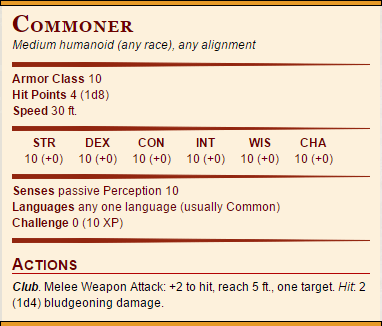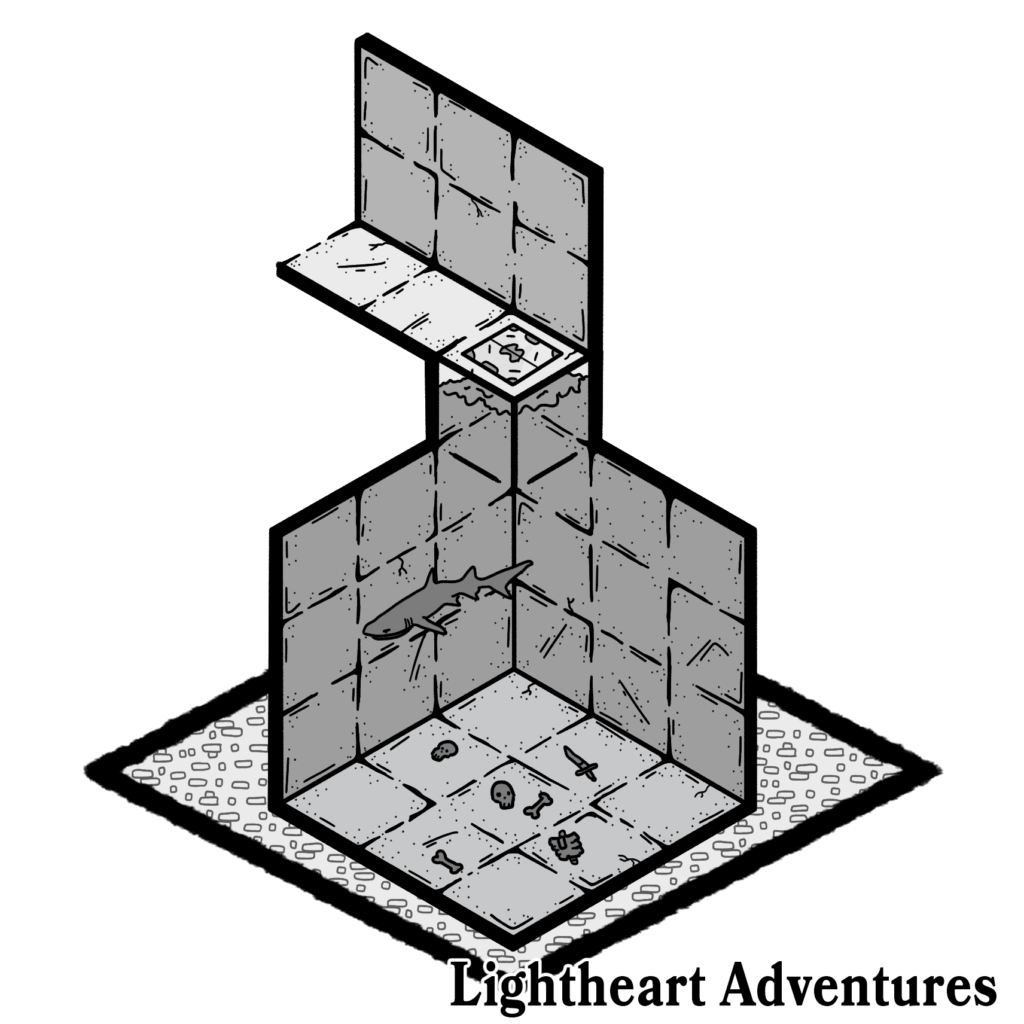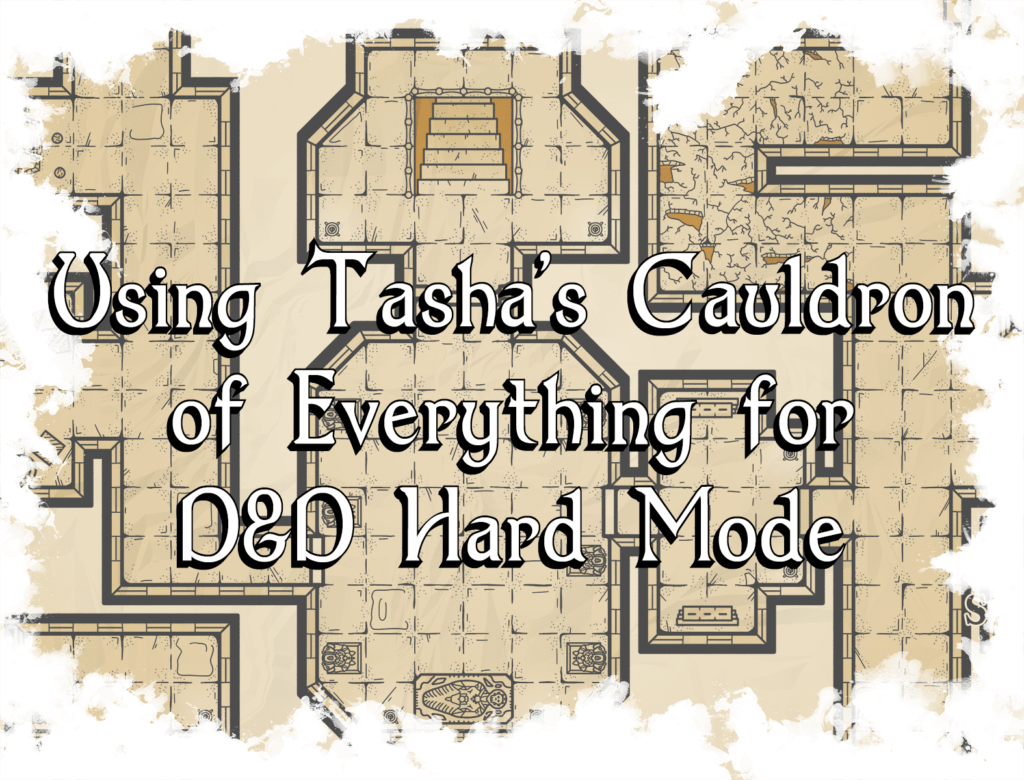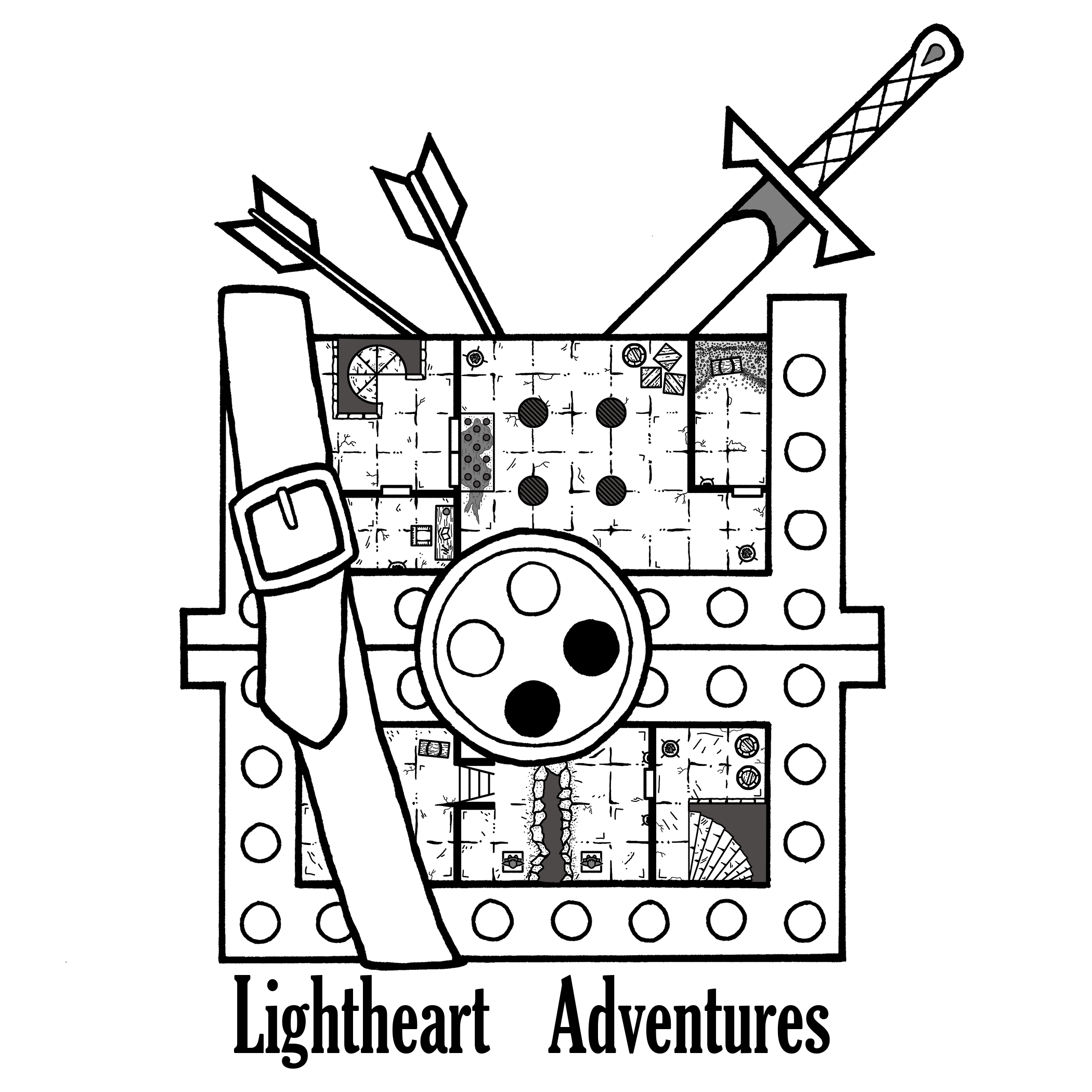Are you wanting to change things up for your party and make things a little more challenging? Maybe you want to take a break from your normal campaign and send your players on an extreme gauntlet. Enter Tasha’s Cauldron of Everything’s sidekick mechanic. I’ve been pouring over the new book to find all sorts of new ways to improve games for Dungeon Masters and players alike. One enticing feature is the addition of the sidekick mechanic, introduced in Unearthed Arcana back in 2018. This mechanic gives DMs three classes to allow favored allies or enemies to progress alongside player characters. While normally meant for NPCs, the sidekick classes are fully playable for players, if they want a challenge. In today’s post, we’re adding homebrew rules for players and DMs who want a unique take on tougher gameplay. That’s right: we’re using a party of just sidekick characters to make D&D 5e Hard Mode.
Disclaimer: This post contains affiliate links, meaning we may receive a small commission from qualifying purchases if you click on our links, at no additional cost to you. As Amazon affiliates, we may earn from qualifying purchases. You can see our full disclosure here. Thanks for supporting your favorite dungeon artists!
D&D 5e Hard Mode Character Creation
Tasha’s Cauldron of Everything introduces us to the three sidekick classes: the warrior, the expert, and the spellcaster. Warriors gain a martial role that either improves attack rolls or a reaction to protect others. Experts increase their proficiencies in skills and can help others on a bonus action. Spellcasters potentially pick spells from two different classes and their cantrips become more powerful. Thematically, they seem more akin to average people rather than the “larger-than-life” personalities that players take on as their characters. As such, if your adventuring group were to make up a group of just Sidekick characters, they would essentially enter D&D 5e hard mode. Here are a few tips to get your players’ sidekick characters up and running.
Starting Stats
Sidekicks work by applying the level template found on page 142 of Tasha’s to an NPC stat block that is CR ½ or less. This can make up some interesting player characters, like a bandit who reforms her ways after meeting the adventurers, or a gray ooze that gained sentience when it absorbed a headband of intellect. Just keep in mind that the Expert and Spellcaster classes require that the stat block creature can speak at least one language. For this hard mode version, start with the stat block of a commoner:

Pretty bland, right? We’re going to change things around starting with stats. Our weaker heroes will use the following stat array: 7,8,10,10,12,13. This reduced score is meant to represent the heroes that may not come from backgrounds of extreme training or dedicated focus.
Another change we’ll make from Tasha’s is that your character’s Hit Die will change depending on the sidekick class you choose. Normally, the hit die value is dependent on the stat block selected as the base. However, we’ll use the following table to determine the hit die characters get:
Warrior: 1d10 per level plus Constitution modifier
Expert: 1d8 per level plus Constitution modifier
Spellcaster: 1d6 per level plus Constitution modifier
Next, pick your race and background as usual. Characters still get any racial bonuses and proficiencies as well as extra skills from their background. This may be hard but shouldn’t be cruel. Point of note — while the stat block may indicate that commoners are medium-sized humanoids, disregard this if you want to play as one of the smaller races.
Equipment
Unlike adventurers who start with expensive equipment ready to go, our sidekick heroes start with a little less than usual. Consult the tables below to determine your class’ starting equipment:
Warrior
- (a) one shortsword and one shield or (b) a longsword
- (a) 6 javelins or (b) a shortbow with 10 arrows
- (a) a dungeoneer’s pack or (b) an explorer’s pack
- One armor piece worth 30 gp or less
Expert
- Any two simple melee weapons
- (a) a set of artisan tools or (b) thieves’ tools
- (a) a burglar’s pack, (b) an entertainer’s pack, or (c) an explorer’s pack
- Leather armor and a sling with 20 bullets
Spellcaster
- (a) a light crossbow with 10 bolts or (b) any simple melee weapon
- (a) a holy symbol, (b) an arcane focus, or (c) a musical instrument
- (a) a scholar’s pack or (b) a dungeoneer’s pack
- Padded armor and a quarterstaff
If none of the starting packages suit your fancy, you can alternatively roll starting wealth by class:
- Warrior: 4d4 x 10 gp
- Expert: 5d4 x 10 gp
- Spellcaster: 4d4 x 10 gp
With your stats and equipment set, you’re ready to send your sidekick adventurer out into the wild!
Tips for Dungeon Masters
Pick battles wisely
I’ve learned that sidekick adventurers don’t have as many options to survive tougher or multiple consecutive combat encounters. Sidekicks rely on regular adventurers for survival against tougher opponents, and their abilities are more supplemental in nature. The rules assume that most groups would have only one or two sidekicks, as multiple can slow down a game. Chances are high that an adventuring group composed solely of sidekicks might not survive long without help.
In normal games, you can use the Challenge Rating (CR) guidelines in the Dungeon Master’s Guide to calculate combat difficulty per party level. However, since the sidekick stats are considerably weaker than baseline adventurers, we may want to make some changes.
I ran a set of very specific battles to determine how capable a group of four sidekicks were at CR levels equivalent to regular adventurers. Both encounters, one with a single ankheg (medium encounter) and the other against four gnolls (deadly encounter), ended with a total party wipe against a group of four level 2 sidekicks. The encounters were close, but in the end, the monsters prevailed partially due to poor dice rolls. My recommendation is to consider sidekick adventurers to be one level lower to calculate CR. This way the sidekick group is still challenged by encounters without being overwhelmed. Alternatively, you can run with normal CR’s for a true D&D 5e Hard Mode experience, which brings us to the next topic.
Faster Leveling
Sidekicks don’t receive as many perks when leveling up, which could lead to a feeling of stagnation between milestone abilities. This was done in part to allow NPCs to join adventuring parties without overshadowing players. Since sidekicks can’t handle as much adventuring as normal classes; it takes longer to level up following the normal character advancement table. On that note, I recommend either decreasing experience requirements, or allow for “milestone” leveling every 1-3 sessions. While this might make for shorter campaigns, quicker leveling will help players feel satisfied if an ability unlock isn’t especially flashy.
Be prepared for player deaths
The threat of character death looms large over sidekick adventurers, so it’s not a bad idea to have players keep “back-up” character sheets ready. Addressing character death with a bit of levity ahead of time will help reduce any sense of loss for players. This might even work itself into the plot of the campaign. Characters could be a crew of “expendable” mercenaries hired to exterminate monsters, with recruits brought in to replace “former” members. If you run into a situation where one or more sidekicks die, you may want to introduce new characters at the same level as the current group, or at least no more than two levels behind.
Wrap up
That does it for my homebrew D&D 5e Hard mode rules featuring sidekicks! I’m personally excited to try this out with my home group, and we’ll see if they live long enough to find glory or at least afford a nice funeral.

Thanks for dropping by! We would love to know how your first gaming session goes, so please drop a comment here on the blog, on Twitter, Facebook, Instagram, or Discord to let us know how it went! If you’d like access to more maps and content, including downloadable PDFs of our adventures, check out our Patreon. We’re able to do what we do because of all our amazing Patrons!







